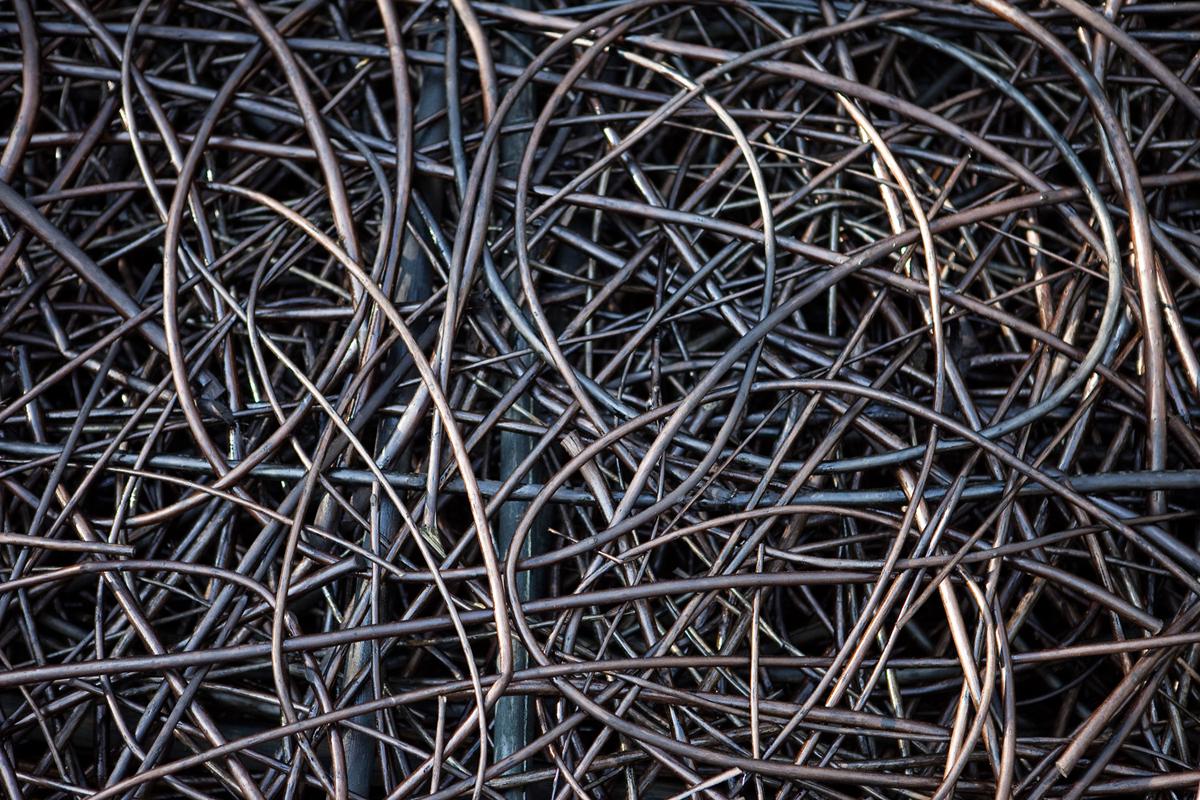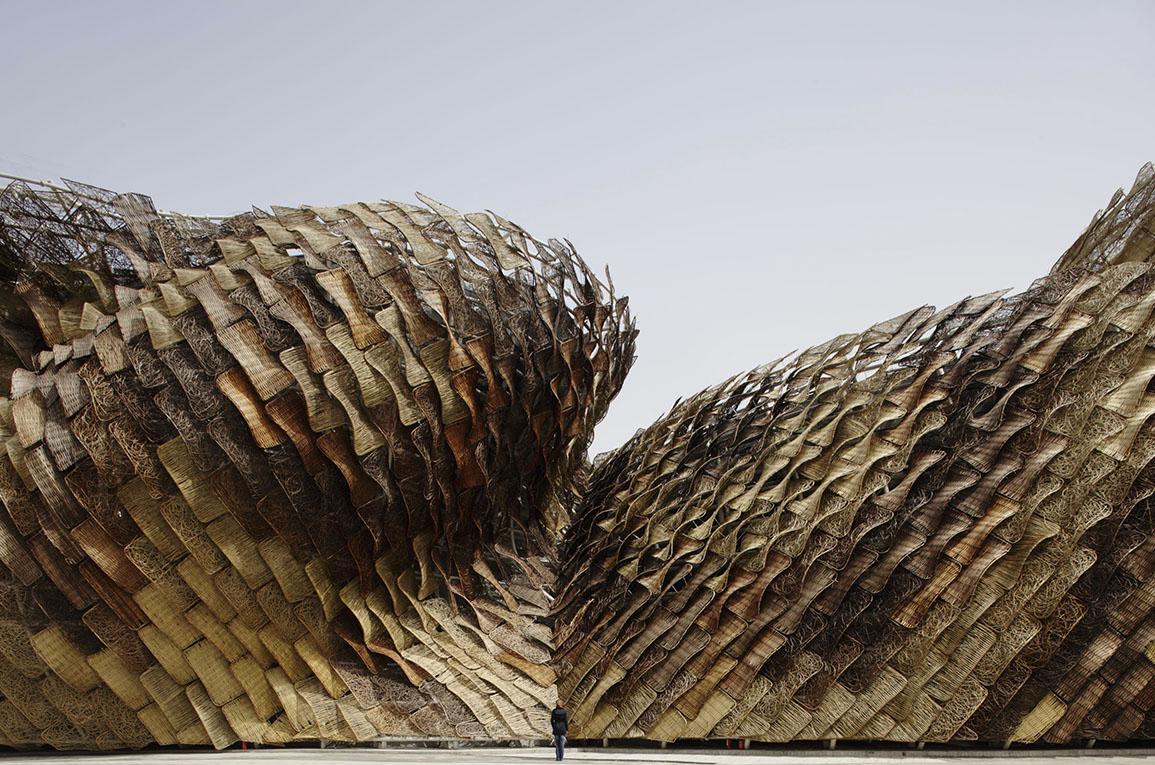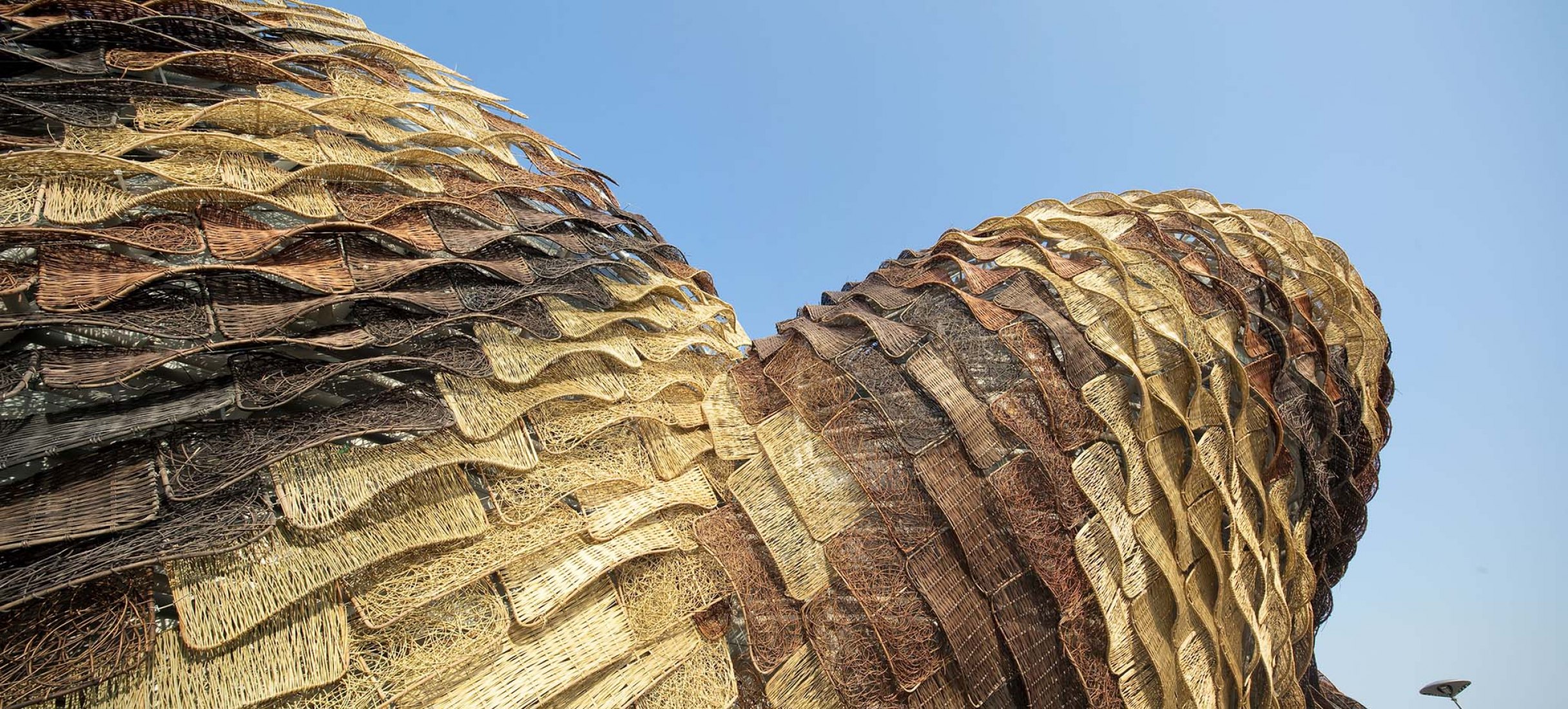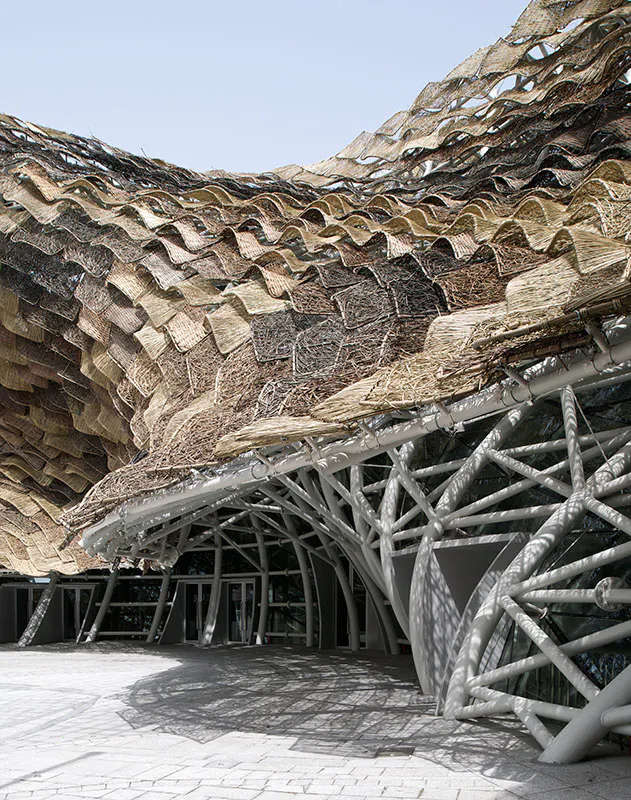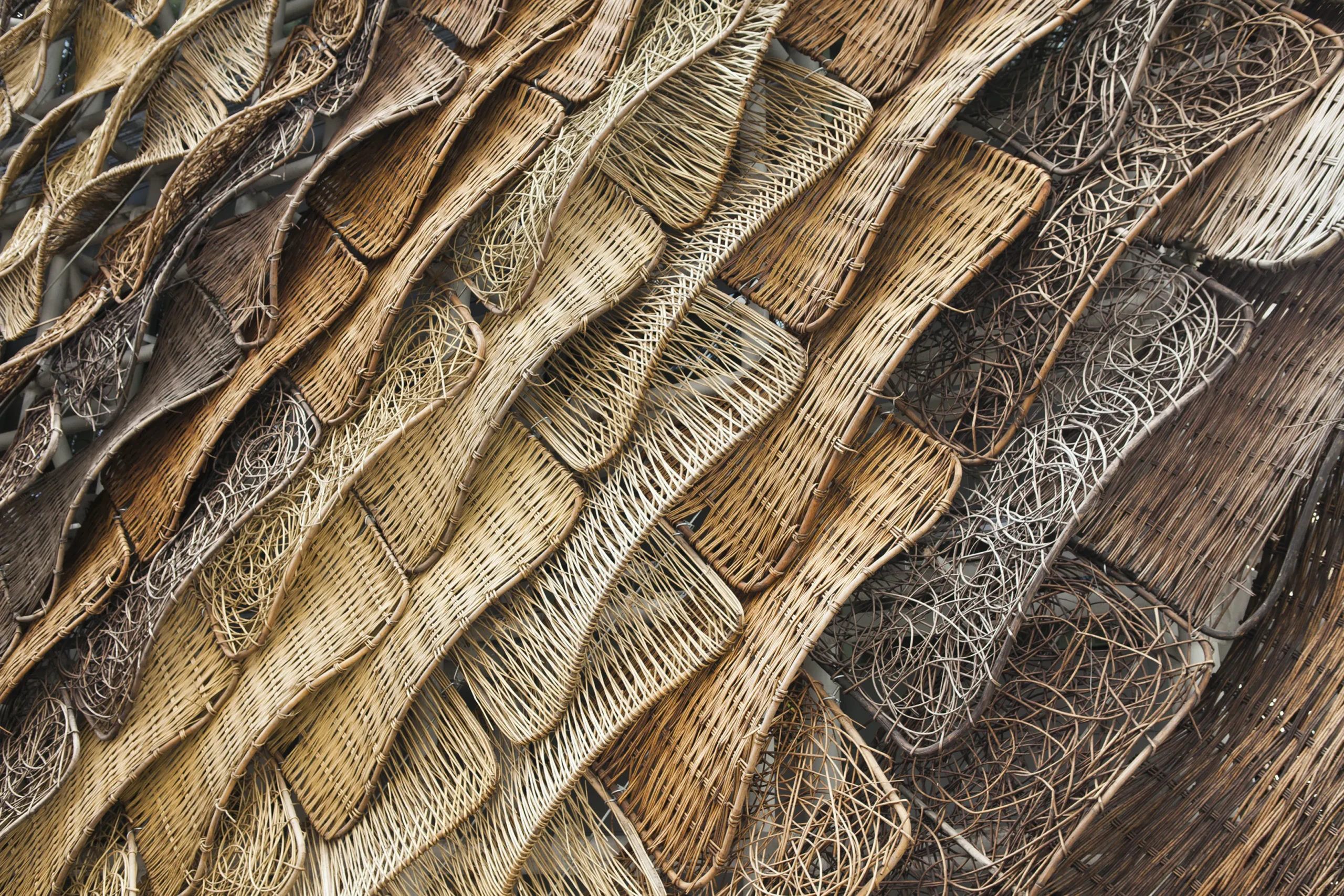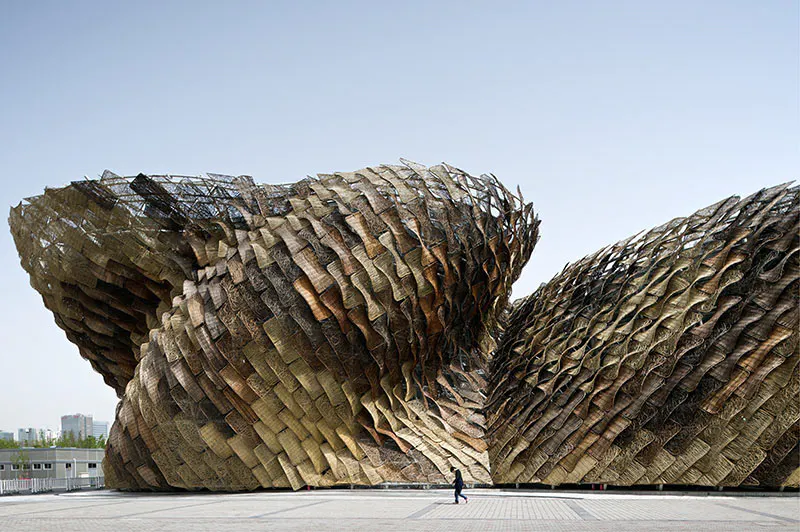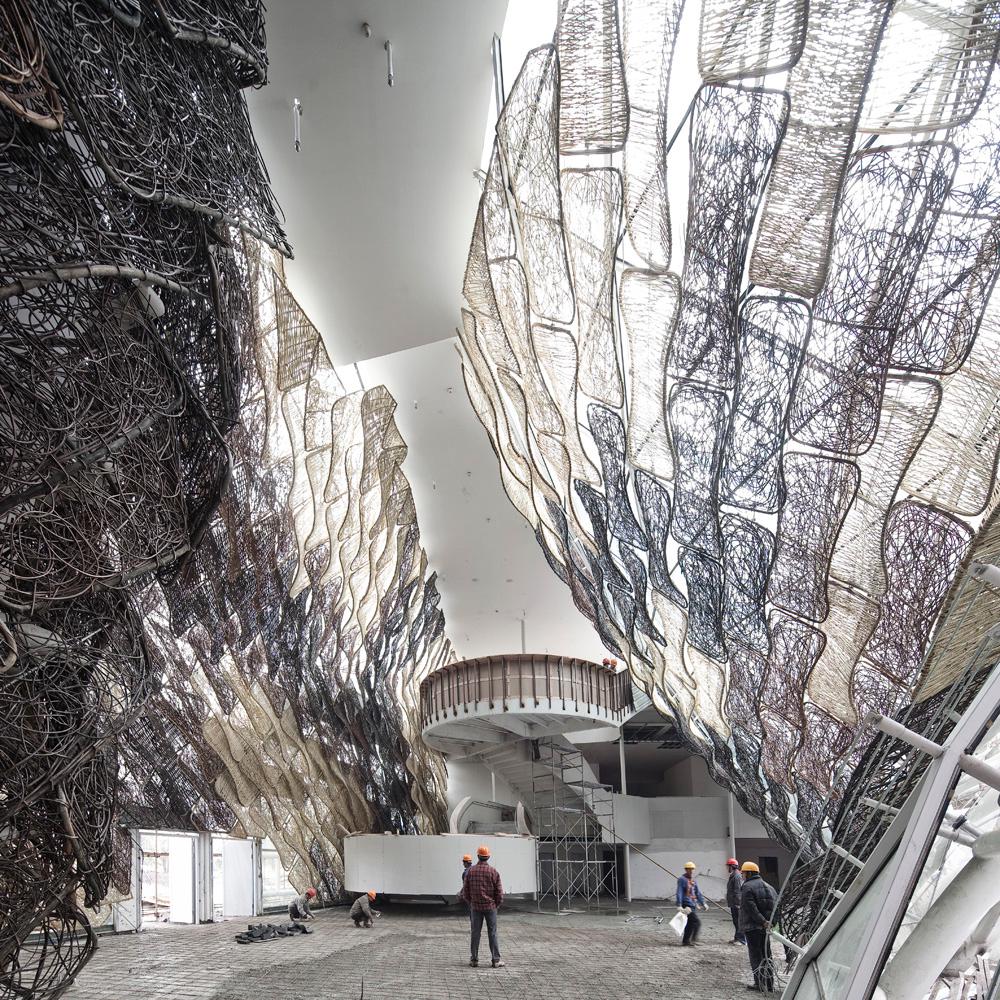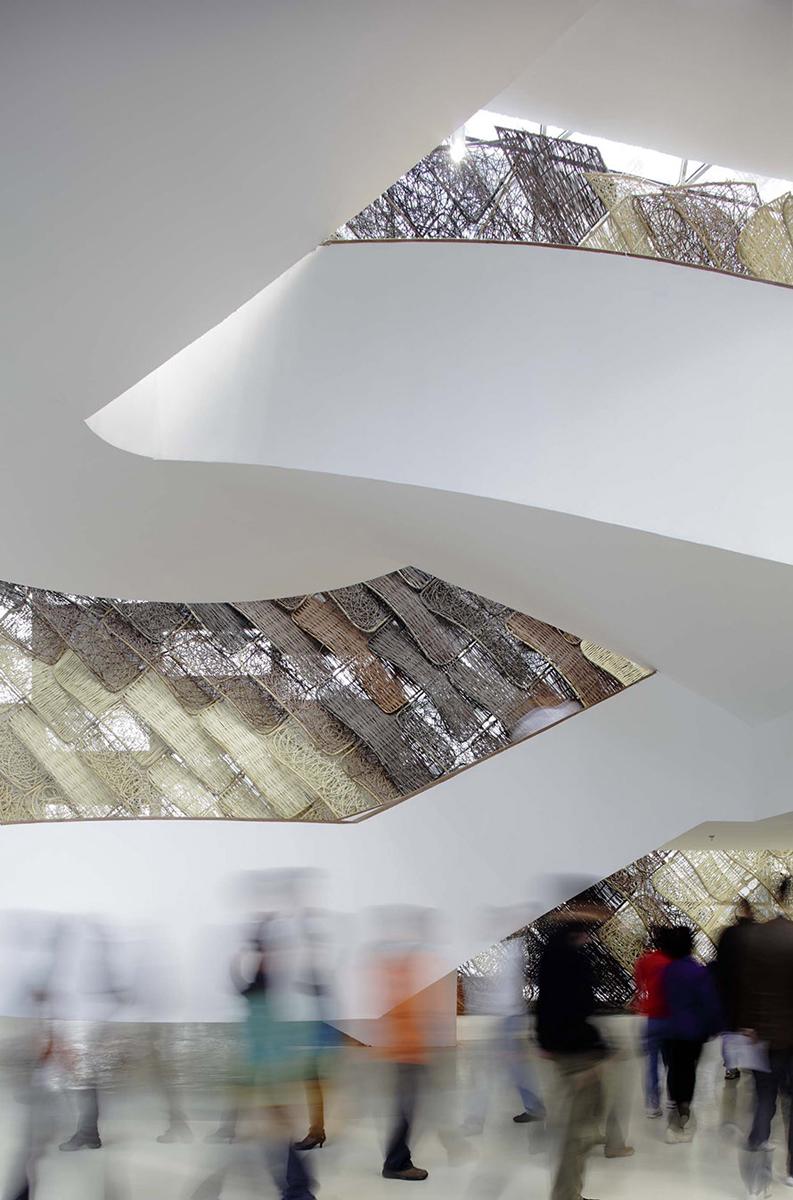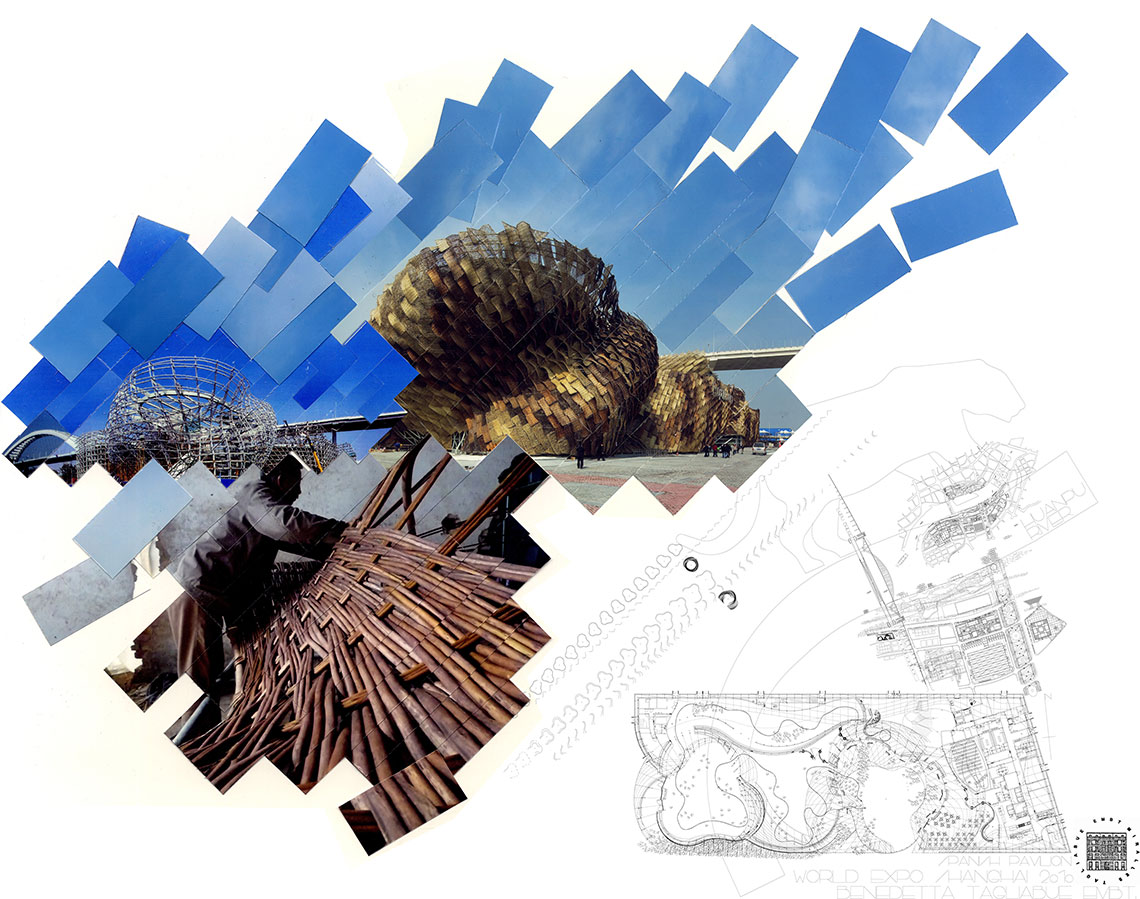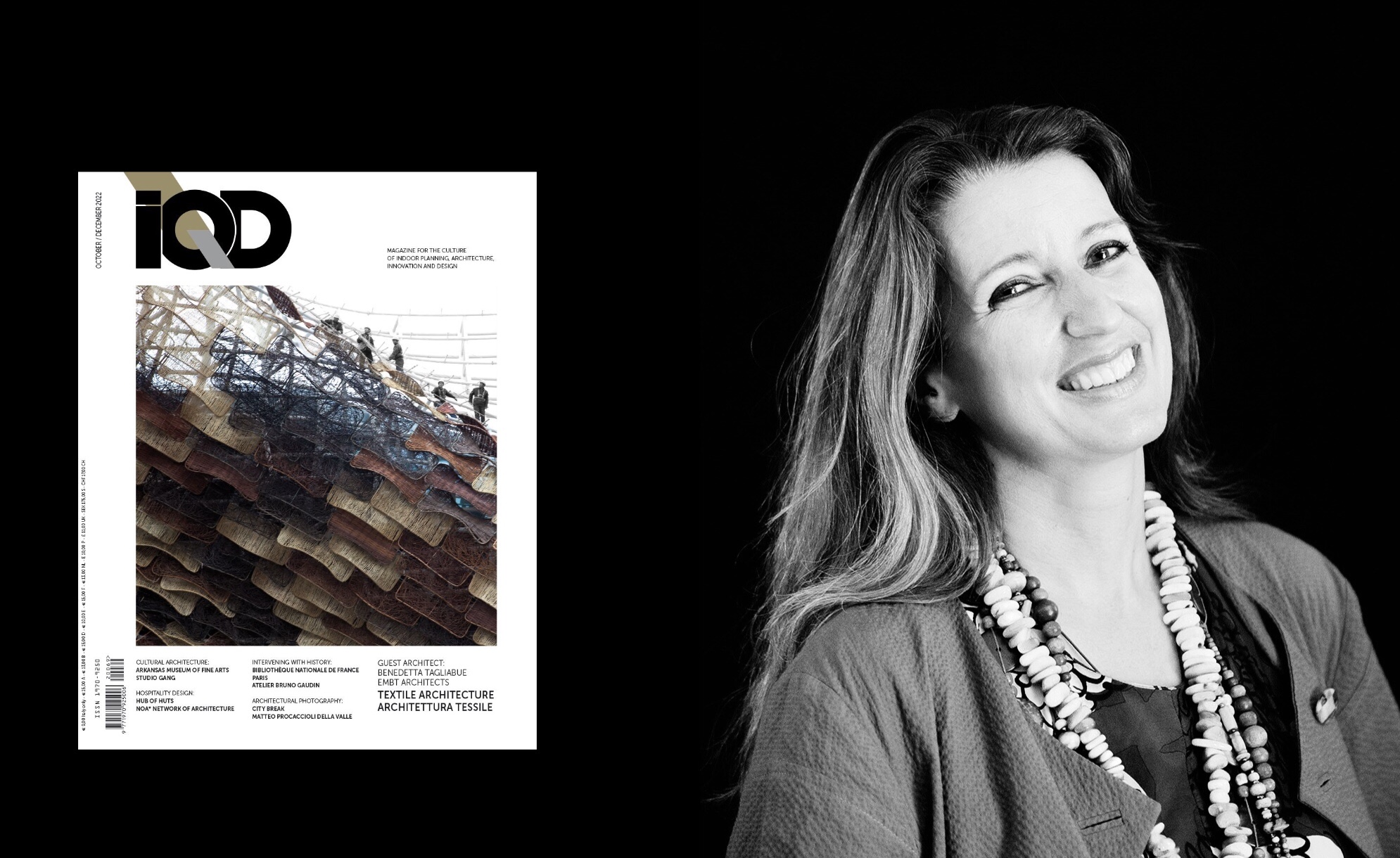
Textile Architecture / Benedetta Tagliabue EMBT Architects for IQD issue 69
Addressing the theme of the art of weaving means investigating a concept linked to the origins of humanity and architecture. After abandoning the caves, man, nomad and hunter, mainly sheltered in huts made of woven branches or wood and in tents made of skins or vegetable fiber fabrics. Architecture is therefore inextricably linked to the primordial skill of weaving. Craftsmanship and dexterity have always been associated with the architectural project in nuce: they have experimented and enriched it over the centuries with new technological and constructive contents.
Towards the middle of the 19th century, the German architect and critic Gottfried Semper identified the origin of making architecture precisely in the weaving technique: not in the rigid structure, but in the covering, in those elements that primordial manual activities, such as binding, sewing, weaving, transform into a continuous surface. The constructive value of textile architecture found its symbolic expression in the Caribbean hut exhibited in 1851 under the vaults of the Crystal Palace in London on the occasion of the first great universal exhibition: hence Semper’s formulation of the concept of the original dwelling, whose constituent elements – the hearth, the roof, the enclosure and the mound – become the very foundation of architecture. Weaving – conceived by Semper as one of the four figurations of the building act together with ceramic molding, tectonics and stereotomy, or masonry – no longer coincides with the structure that supports it, but it conceals it, defining form, quality and character of the space. Since fabric is a very ancient artifact, its technical and expressive potentials have been extensively tested and enriched over the centuries.
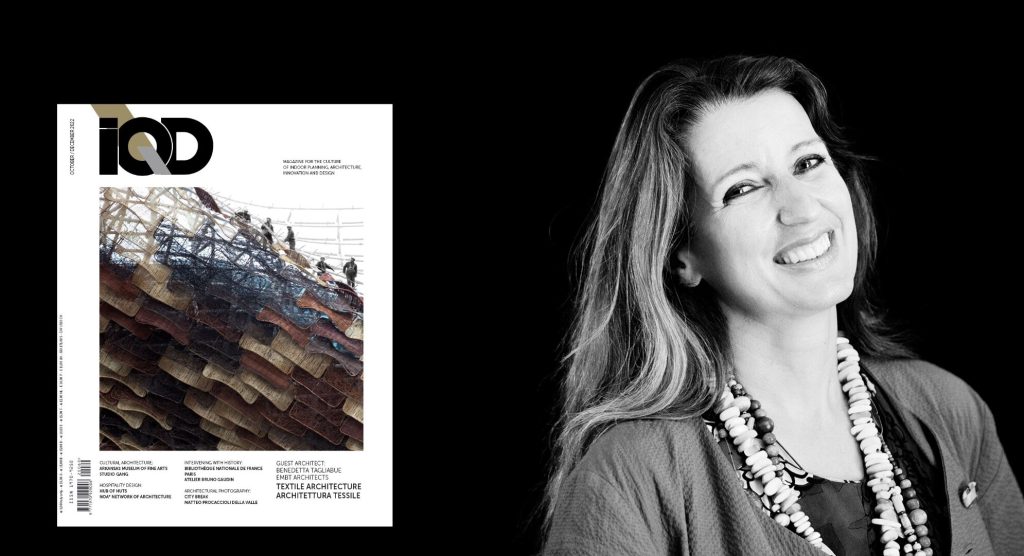
Today, designing by weaving means rediscovering the origin and the process of the connections between man, his artifacts and architecture; it means rediscovering a past capable of enhancing the present and of helping it to face the most important challenges, including the environmental ones. Designing by weaving has also the allegorical meaning of intervening on the social fabric, in this case by weaving together people, cultures, living conditions and schools of thought. A participatory project, in which the architect’s skills intertwine with the needs and cultures of the people for whom the work is intended, creates a sense of belonging and enriches all involved people, architecture and context. The projects featured in Textile Architecture section in IQD issue 69, express the values and potential of the architecture of weaves. Each project deals with the theme of weaving in a different way, in a material, technical or metaphorical way, in its genesis and in its purposes and together they represent an interesting incipit of discussion on the constructive, figurative and ethical value of weaves, a very broad topic that concerns several sectors and disciplines.
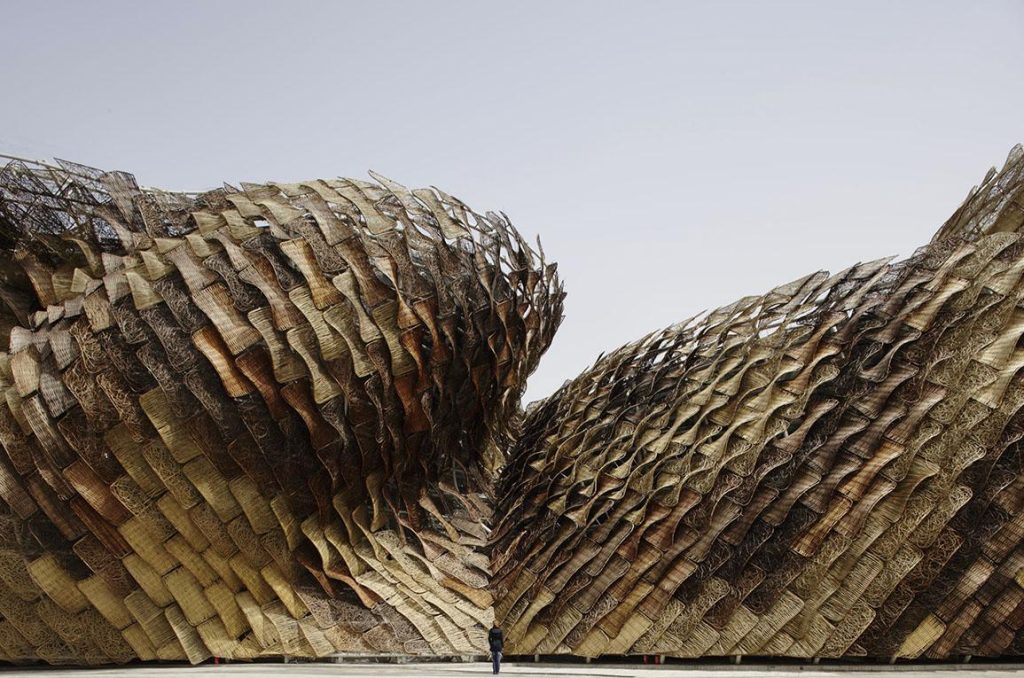
As philosopher Walter Benjamin, born at the end of the 19th century, argued, beauty is neither the veil nor the veiled, but the object itself beneath the veil. Only beauty, and nothing outside of it, can be essential by veiling and remaining veiled, the divine ground of the being of beauty lies in the secret. This is one of principles inspiring the work of the studio EMBT Architects. The Spanish Pavilion built for the Shanghai Universal Expo in 2010 embodies the overcoming of the internal-external dichotomy through a fusion of hybrid spaces that favor and facilitate the fluid movement of visitors. Intending to avoid any conventional representation of the country with the aim of exploring more abstract concepts, the pavilion was inspired by a reflection on the climate in Spain and how this is experienced through architecture. It expresses it through the rediscovery of an aspect of the extraordinary artistry of wickerwork, which we seek to explore, revive and reinvent as a new construction technique.

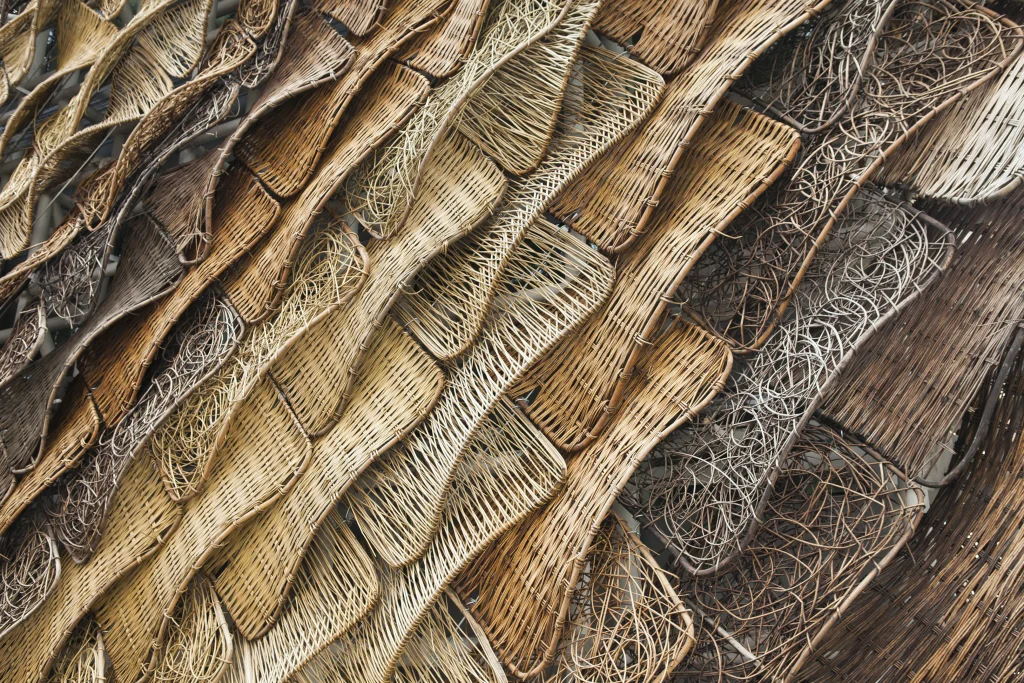
Wicker is a material that adds an ecological and sustainable factor to every part of a building. The technique of basket making, the process of manually weaving plant fibres, is a global tradition shared, with some variations specific to different geographical regions, by every Eastern and Western culture throughout history. In this way, choosing this material meant building a bridge between two cultures, that of the Spanish visitors and that of the Chinese hosts. The semi-transparent quality of the plant fibre textiles has helped designing courtyards that, like wicker baskets, create a wonderful atmosphere of light: a sort of veiled transparency and an ever changing play of light and shadow that never fall into triteness. The strong exterior light is diffused as it enters the pavilion through the overlapping space frames of wicker and steel. A series of squares and internal courtyards, conceived as breathing spaces, represent those hybrid spaces that allow the pavilion to eschew the model of the box containing a single space. In contrast to the advanced construction of the tubular metal structure, the wicker panels that cover the façade were made using much simpler, even ancestral, methods by local wicker artisans in small shops, using a wicker weave stretched over slightly distorted rectangular tubular metal frames that give the panels their peculiar warp. This expressiveness, rarely found in contemporary 21st-century buildings, was achieved by using simple methods that differ very little from age-old traditional techniques.

